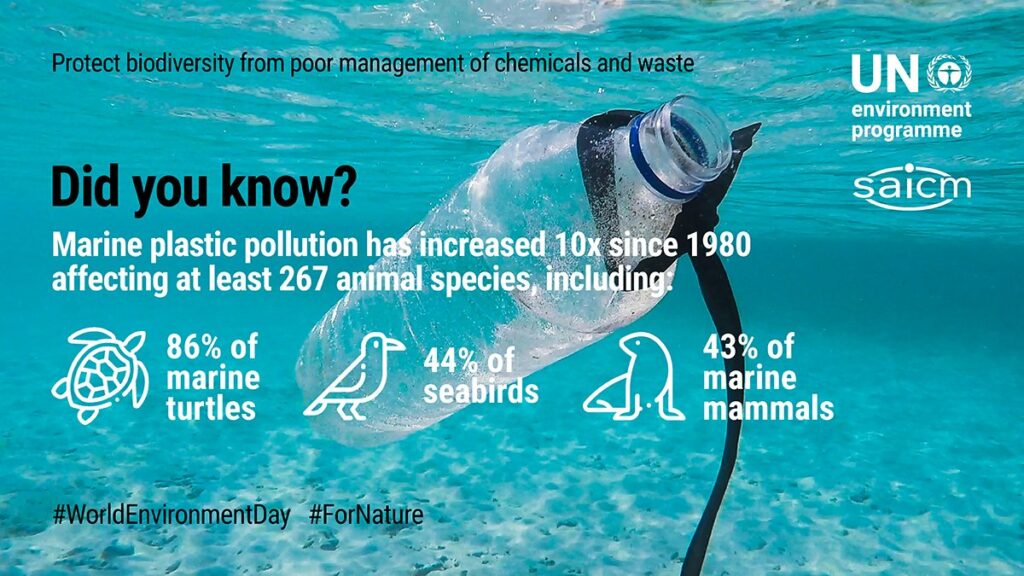
The Society for Freshwater Science (SFS) Presents Career Award for Environmental Stewardship

The Society for Freshwater Science (SFS) has announced that Dr. Lucinda Johnson, an aquatic ecologist and Senior Research Fellow at the UMN Natural Resources Research Institute in Duluth, will receive the 2024 Career Award for Environmental Stewardship.
About the Career Award for Environmental Stewardship
The Career Award for Environmental Stewardship recognizes individuals who have successfully translated scientific knowledge into the social/public arena through policy or regulatory reform, research that enhances freshwater ecosystem rehabilitation or conservation, or public outreach and science education that strengthens public support for managing freshwater ecosystems.
According to Dr. Sherri Johnson, President of the Society for Freshwater Science, “The SFS Career Awards recognize those who have made outstanding contributions in advancing freshwater science through research, translating this science into policy or social action, and service to SFS. We are proud to honor Dr. Johnson and colleagues who have demonstrated excellence in research, leadership, and service, as well as communication in the field of freshwater science.”
About Dr. Lucinda Johnson
Dr. Lucinda B. Johnson is an aquatic and landscape ecologist whose research focuses on the impacts of multiple stressors on aquatic ecosystems, with emphasis on human activities (e.g., land use) and climate change. She has recently been named a Senior Research Fellow after stepping down as the Director of Research at NRRI. Her work involves leading and advising multidisciplinary research teams that address issues of regional to global concern, with a particular emphasis on the Sustainable Development Goals (SDGs) related to the Laurentian Great Lakes.
Dr. Johnson’s research and advisory activities lie at the nexus of research, management, and policy. She currently serves as the U.S. Co-Chair of the International Joint Commission’s Science Advisory Board Science Priority Committee and also serves as the vice chair of the Executive Committee for EPA’s Board of Scientific Counselors (BOSC). Additionally, she has served on the Minnesota Governor’s Climate Change Advisory Council and has participated in various EPA Advisory Panels, including Lake Erie Phosphorus Reduction, Effects of Connectivity on Downstream Waters, Mountaintop Mining, and Benchmarks for a Conductivity Standard. As vice chair of the EPA BOSC, she led the review of the agency’s research on PFAS.
Throughout her career, Dr. Johnson has been actively involved in the Society for Freshwater Science. She served as Secretary for two terms, as President for one term, and was named an SFS Fellow in 2020.
Dr. Johnson credits her mentors and colleagues, especially Judy Meyer and Cliff Dahm, for providing her with opportunities early in her career that opened doors to the deeply satisfying work involved in environmental stewardship.
Award Presentation
The Society for Freshwater Science will present Dr. Johnson with the 2024 Career Award for Environmental Stewardship at the Society’s 2024 Annual Meeting in Philadelphia in June.
SDGs, Targets, and Indicators
1. Which SDGs are addressed or connected to the issues highlighted in the article?
- SDG 6: Clean Water and Sanitation
- SDG 13: Climate Action
- SDG 14: Life Below Water
- SDG 15: Life on Land
The article discusses the work of Dr. Lucinda Johnson, an aquatic ecologist, and her research on the impacts of multiple stressors on aquatic ecosystems, including human activities and climate change. This connects to SDG 6, which aims to ensure availability and sustainable management of water and sanitation for all. It also relates to SDG 13, which focuses on taking urgent action to combat climate change and its impacts. Additionally, Dr. Johnson’s research on freshwater ecosystems aligns with SDG 14, which aims to conserve and sustainably use the oceans, seas, and marine resources. Finally, her work on the impacts of land use and her focus on the Laurentian Great Lakes connect to SDG 15, which seeks to protect, restore, and promote sustainable use of terrestrial ecosystems.
2. What specific targets under those SDGs can be identified based on the article’s content?
- SDG 6.6: By 2020, protect and restore water-related ecosystems, including mountains, forests, wetlands, rivers, aquifers, and lakes.
- SDG 13.3: Improve education, awareness-raising, and human and institutional capacity on climate change mitigation, adaptation, impact reduction, and early warning.
- SDG 14.1: By 2025, prevent and significantly reduce marine pollution of all kinds, particularly from land-based activities, including marine debris and nutrient pollution.
- SDG 15.1: By 2020, ensure the conservation, restoration, and sustainable use of terrestrial and inland freshwater ecosystems and their services, in particular forests, wetlands, mountains, and drylands, in line with obligations under international agreements.
The article highlights Dr. Johnson’s research on freshwater ecosystems and the impacts of human activities and climate change. Based on this content, the following targets can be identified: SDG 6.6 focuses on protecting and restoring water-related ecosystems, including lakes, which aligns with Dr. Johnson’s work. SDG 13.3 emphasizes improving education and awareness on climate change mitigation and adaptation, which is relevant to her research on the impacts of climate change on aquatic ecosystems. SDG 14.1 aims to reduce marine pollution from land-based activities, including nutrient pollution, which connects to Dr. Johnson’s focus on freshwater ecosystem rehabilitation. Finally, SDG 15.1 calls for the conservation, restoration, and sustainable use of terrestrial and freshwater ecosystems, including wetlands and lakes, which aligns with Dr. Johnson’s research on the Laurentian Great Lakes.
3. Are there any indicators mentioned or implied in the article that can be used to measure progress towards the identified targets?
- Indicator for SDG 6.6: Proportion of water bodies with good ambient water quality
- Indicator for SDG 13.3: Number of countries that have integrated mitigation, adaptation, impact reduction, and early warning measures into relevant policies, strategies, or planning
- Indicator for SDG 14.1: Marine protected areas as a percentage of territorial waters
- Indicator for SDG 15.1: Proportion of important sites for terrestrial and freshwater biodiversity that are covered by protected areas
The article does not explicitly mention specific indicators, but based on the identified targets, the following indicators can be used to measure progress: for SDG 6.6, the proportion of water bodies with good ambient water quality can be used; for SDG 13.3, the number of countries that have integrated climate change measures into policies and planning can be tracked; for SDG 14.1, the percentage of marine protected areas in territorial waters can be monitored; and for SDG 15.1, the proportion of important sites for biodiversity covered by protected areas can be measured.
4. Table: SDGs, Targets, and Indicators
| SDGs | Targets | Indicators |
|---|---|---|
| SDG 6: Clean Water and Sanitation | 6.6: By 2020, protect and restore water-related ecosystems, including mountains, forests, wetlands, rivers, aquifers, and lakes. | Proportion of water bodies with good ambient water quality |
| SDG 13: Climate Action | 13.3: Improve education, awareness-raising, and human and institutional capacity on climate change mitigation, adaptation, impact reduction, and early warning. | Number of countries that have integrated mitigation, adaptation, impact reduction, and early warning measures into relevant policies, strategies, or planning |
| SDG 14: Life Below Water | 14.1: By 2025, prevent and significantly reduce marine pollution of all kinds, particularly from land-based activities, including marine debris and nutrient pollution. | Marine protected areas as a percentage of territorial waters |
| SDG 15: Life on Land | 15.1: By 2020, ensure the conservation, restoration, and sustainable use of terrestrial and inland freshwater ecosystems and their services, in particular forests, wetlands, mountains, and drylands, in line with obligations under international agreements. | Proportion of important sites for terrestrial and freshwater biodiversity that are covered by protected areas |
Copyright: Dive into this article, curated with care by SDG Investors Inc. Our advanced AI technology searches through vast amounts of data to spotlight how we are all moving forward with the Sustainable Development Goals. While we own the rights to this content, we invite you to share it to help spread knowledge and spark action on the SDGs.
Fuente: duluthnewstribune.com

Join us, as fellow seekers of change, on a transformative journey at https://sdgtalks.ai/welcome, where you can become a member and actively contribute to shaping a brighter future.






